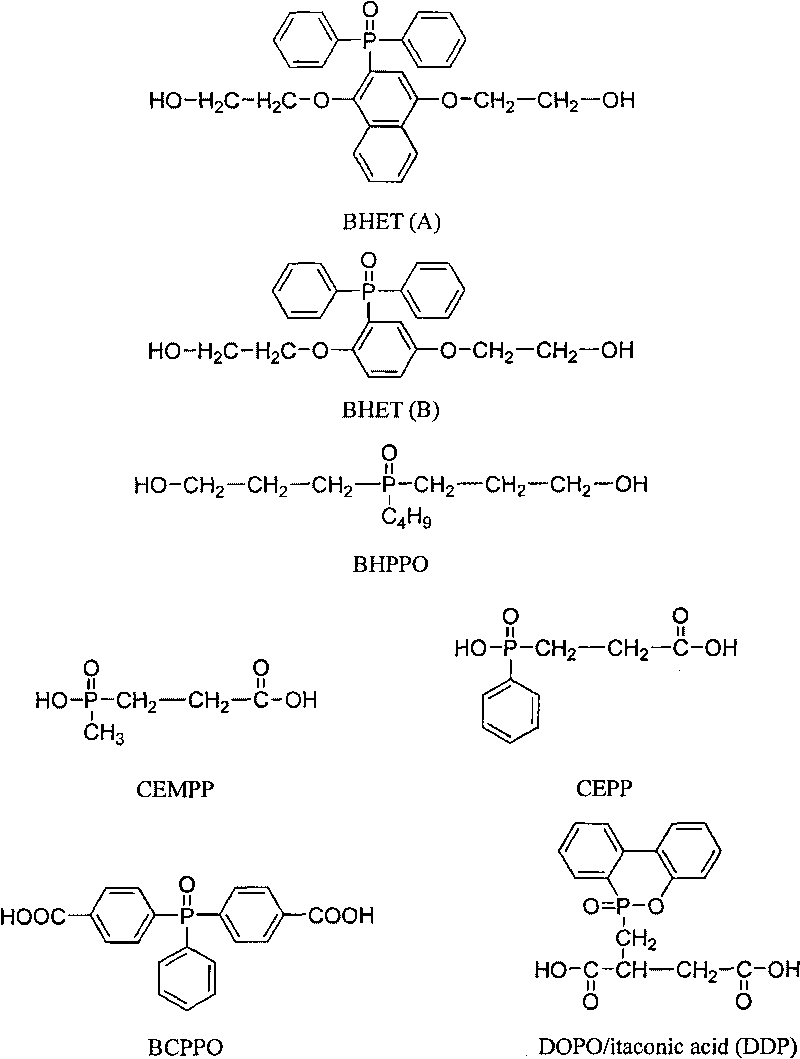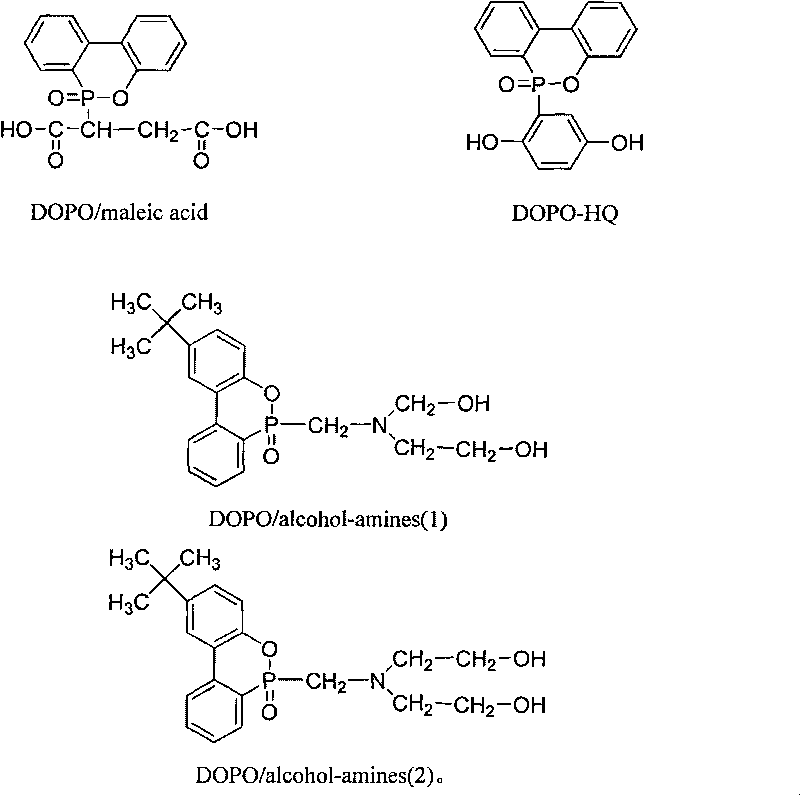Phosphorus-containing PTT fire-resistant copolyesters/ nano composite material and preparation method thereof
A technology of trimethylene phthalate and nano-composite material is applied in the field of phosphorus-containing polytrimethylene terephthalate flame retardant copolyester/nano-composite material and preparation thereof, and can solve the problems of affecting the mechanical properties of materials, being difficult to disperse uniformly, Flame retardancy decline and other problems, to achieve the effect of easy promotion, improved fiber performance, and low cost
- Summary
- Abstract
- Description
- Claims
- Application Information
AI Technical Summary
Problems solved by technology
Method used
Image
Examples
Embodiment 1
[0031] First, 16.22 g of montmorillonite was modified according to the method described in CN 1396206A.
[0032] First add 291g of dimethyl terephthalate, 286g of 1,3-propanediol and 0.31g of zinc acetate catalyst into the reaction vessel and stir to raise the temperature. Until methanol is produced, then add 3.12g of DDP to the system, continue to stir and react at 170-200°C until no more water is produced. Add 0.12 g of tetrabutyl titanate catalyst and the above-prepared modified montmorillonite to the system, vacuumize the system until the system pressure is 400 Pa, and raise the temperature to 190-220 ° C for 1 hour for pre-condensation. Then evacuate until the system pressure is ≤50Pa, and at the same time raise the reaction temperature to 250-270°C for 3 hours for polycondensation.
Embodiment 2
[0034] First add 291g of dimethyl terephthalate, 346g of 1,3-propanediol, and 0.16g of zinc acetate catalyst into the reaction vessel and stir to raise the temperature. Until methanol is produced, then add 16.36g of DDP to the system, continue to stir and react at 190-210°C until no more water is produced. Add 0.26g of tetrabutyl titanate catalyst and 0.348g of nano-silicon dioxide pre-dispersed in 5ml of 1,3-propanediol to the system, and evacuate the system to a pressure of 200Pa, and raise the temperature to 190-220°C for 1 hour of precondensation. Then evacuate until the system pressure is ≤100Pa, and at the same time raise the reaction temperature to 220-250°C for polycondensation for 5 hours. The resulting product was pulverized and solid-state polymerized at a temperature of 160° C. for 0.5 hours.
Embodiment 3
[0036]First add 291g of dimethyl terephthalate, 236g of 1,3-propanediol, and 0.17g of cobalt acetate catalyst into the reaction vessel and stir to raise the temperature. Until methanol is produced, then add 34.78g of DDP to the system, continue to stir and react at 160-180°C until no more water is produced. Add 0.12g of tetrabutyl titanate catalyst and 6.68g of mecca stone to the system, and evacuate the system until the pressure of the system is 200Pa, and keep the temperature at 190-210°C for 0.3 hours for pre-condensation. Then evacuate until the system pressure is ≤100Pa, and at the same time raise the reaction temperature to 220-250°C for 0.5 hours of polycondensation.
PUM
| Property | Measurement | Unit |
|---|---|---|
| limiting oxygen index | aaaaa | aaaaa |
Abstract
Description
Claims
Application Information
 Login to View More
Login to View More - R&D
- Intellectual Property
- Life Sciences
- Materials
- Tech Scout
- Unparalleled Data Quality
- Higher Quality Content
- 60% Fewer Hallucinations
Browse by: Latest US Patents, China's latest patents, Technical Efficacy Thesaurus, Application Domain, Technology Topic, Popular Technical Reports.
© 2025 PatSnap. All rights reserved.Legal|Privacy policy|Modern Slavery Act Transparency Statement|Sitemap|About US| Contact US: help@patsnap.com



